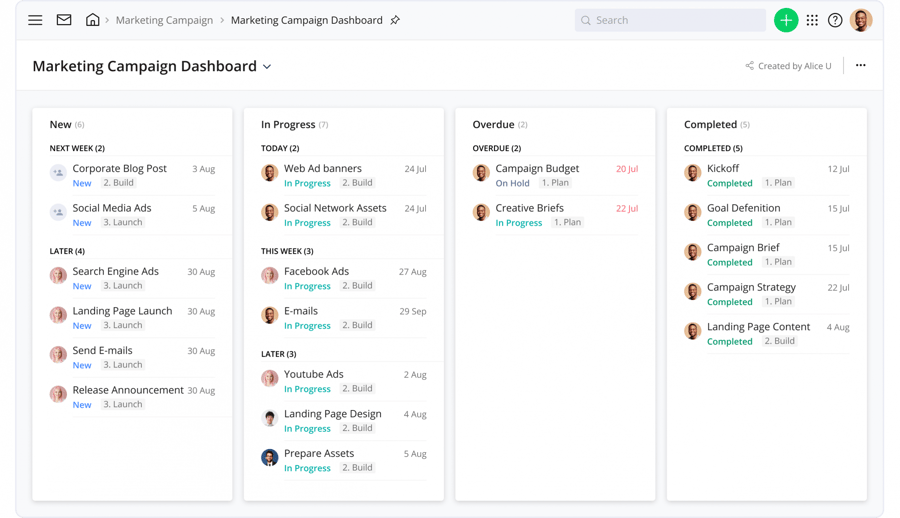Key takeaways:
- What is multi-channel marketing? It’s a strategy that engages customers across various platforms, mirroring their behavior and enabling seamless communication throughout their journey.
- Why is it important? Multi-channel marketing increases conversions by allowing customers to interact with your brand wherever they are, meeting their expectations for consistency and accessibility.
- What benefits does it provide? It offers access to valuable data, improves campaign effectiveness, develops strong ecosystems, enhances customer engagement, and helps businesses better understand customer preferences.
- What challenges should I anticipate? Maintaining cohesion across channels can be difficult, content creation is resource-intensive, and measuring campaign success may require additional tools and strategies.
- How can I optimize my strategy? Focus on consistency, simplify messaging, leverage customer insights, use retargeting, and keep your strategy evolving to improve engagement across all channels.
Multi-channel marketing is a complex yet powerful strategy that marketers use to reach more leads using various platforms. By implementing multi-channel marketing, you can reach out to your customers at every stage of their journey. It also allows marketers to study behavioral patterns, making sending targeted messages relevant to their interests easier. Keep reading to discover what multi-channel marketing is and how to make the most of it with the right tools.
What is multi-channel marketing?
Multi-channel marketing is often defined as the strategy of communicating with prospects and customers across various channels. Instead of running a single campaign or tactic, marketers are now mirroring how consumers operate in various places all at once. It enables leads to take action in response to your offer or service without requiring them to purchase it using one particular channel.
There are many types of channels that a business can use to reach potential customers. The most popular ones are:
- Social media
- Digital marketplaces
- Paid and native advertising
- Content creation
- Podcasting
- Blogging
- Direct mail marketing
- Mobile marketing
- Voice assisted search
However, not all channels are created equal. The platforms you start with will largely depend on your industry, your audience, and your team’s workload capacity. For example, a B2B software startup may need to focus on building an engaged audience on LinkedIn before expanding to additional channels to build long-term success.
With so many marketing channels to choose from, it’s no wonder that many companies still struggle to create multi-channel campaigns that can stand out from the crowd. Yet, as the number of marketing channels continues to expand, it becomes more important to develop multi-channel marketing campaigns that can reach all of your potential customers.
With multiple channels in play, it’s also important to measure the effectiveness of each one. Through closed-loop analytics, marketers will be able to identify which channels were most effective and which ones were not.
Why is it important to your business?
Multi-channel marketing is important for the simple reason that customers are everywhere. Today’s world is full of more channels than ever before, and the need to embrace multi-channel marketing is becoming a critical one.
With the rise of digital marketing, customers have more control over their buying decisions. And for many, they’d prefer to consult multiple channels before coming to a conclusion. So it’s easy to see why having the ability to customize how people interact with your business is very helpful for increasing conversions.
Another reason why it’s so important to participate in multi-channel marketing is that many consumers expect it these days. Think of it as an opportunity for your brand to stay consistent across various mediums, which helps keep it fresh and relevant.
What are the benefits of multi-channel marketing?
1. Access valuable data
By implementing multi-channel marketing, you’ll be able to reach out to your customers at every stage of their journey. And by analyzing their behavioral patterns, you can send targeted messages that are relevant to their interests.
2. Improve campaign effectiveness
Through multi-channel marketing, companies can create an integrated approach that combines various communication channels to reach their customers. This strategy allows them to measure and respond to each other in real-time.
Plus, by creating a multi-channel marketing platform that enables marketers to connect and execute cross-channel campaigns, you can improve the effectiveness and efficiency of your marketing efforts while also reducing costs.
For example, having more touchpoints in your funnel helps you collect more data. After all, knowing your audience can help determine the best way to reach them.
3. Develop strong ecosystems
A good multi-channel marketing ecosystem ties all of your customer touchpoints into one overall experience. You’re able to measure and react to each customer’s behavior across all of your marketing channels so that your messages are always aligned with theirs.
4. Track wins accurately
It can also help you measure your success and identify areas where your promotions are performing well. With that information, you’ll be able to perform A/B testing with the same message on a variety of channels. Or send different messages per platform once you drill down on who uses which channel for what.
5. Engage audiences more
A multi-channel marketing campaign can help drive engagement and enhance a customer’s experience at all touchpoints. For example, if a customer visits a shoe store, she might receive a discount code after choosing to receive a personalized message from the store. After choosing to receive a welcome email, she’ll also be prompted to download the brand app.
6. Understand customers better
A successful multi-channel marketing campaign is one that will help you understand your customer’s communication and brand preferences so that you can constantly deliver relevant offers across all of them.
After they’ve completed the onboarding process, you’ll start providing targeted promotions based on their interests. For instance, if a user has saved their interests for future purchases, you can offer them limited-time discounts or promote products that match their saved interests.
When your customers engage with your brand through various methods, you can use their behavioral insights to deliver highly personalized marketing messages. These insights can be used to inform content that’s relevant to their interests.
Multi-channel marketing examples
Not sure where to begin? The simplest approach that many successful companies take is to add a complementary channel to an already established campaign. Here are some multi-channel marketing examples that illustrate this idea:
- Google Ads are used to promote various products and services. These extensions allow advertisers to easily integrate mobile and web activity into their ad campaigns.
- Some mail-order catalogs feature URLs or QR codes that direct viewers to a website. This feature is popular because it lets users order online without manually navigating to the online portion of the brand.
- Many television shows take advantage of the second screen effect by featuring a Twitter hashtag overlay during their shows. Some also verbally encourage their audience to participate on Twitter by following, retweeting, and using the hashtag while watching.
Ways to improve your multi-channel communications
Despite the advantages of multi-channel marketing, this approach does come with its own unique challenges. First, multi-channel marketing can be very costly. Second, it can take a while to develop a strategy and implement it. Third, it can also be difficult to measure the success of a campaign.
With these common issues in mind, here are some simple yet effective ways to improve your existing campaigns:
- Be consistent. One of the most powerful factors that drive a successful customer experience is consistency. If your customers have varying experiences across all channels, then you run the risk of alienating them.
- Stay focused. Creating highly choreographed campaigns that are designed to influence multiple channels and devices is not realistic. Instead, marketers should constantly develop and coordinate campaigns that are designed to deliver consistent experiences across all platforms.
- Simplify everything. Creating targeted messaging that is both accurate and memorable is key to keeping your customers engaged. If you don’t already have one clear idea in all of your content, it’s time to reorganize your calendar.
- Research more. A clearly defined buyer persona helps marketers identify their ideal buyer and formulate their marketing efforts. Having a clear view of the customer is also critical to understand their behavior. It can help you identify areas where you can improve and develop new strategies to engage more effectively with them.
- Grow together. Your customer view must evolve along with their experiences. Doing so means constantly updating and revamping your data models and systems. Also, stay on top of marketing trends for each channel.
- Recognize your limits. Success doesn’t come by being present on all of these channels. It comes by addressing the various areas of multi-channel marketing that are necessary to be successful.
- Use retargeting. Retargeting is a form of advertising that shows targeted ads to people who have bounced from your website while on other platforms. By understanding how many times website users have visited your pages and clicked on your ad, you can then customize your messages and offer them more relevant offers.
- Include activities. An activation sequence is initiated when a customer makes a purchase or opts in to a marketing offer across various platforms. This step typically begins by sending an email to confirm their account information.
How does multi-channel marketing compare with omnichannel?
Omnichannel and multi-channel marketing have one big thing in common. They both require you to know which of your channels are most likely to work for your buyer persona and your goals. Other than that, they are quite different.
Unlike with omnichannel marketing, cross-channel marketing is the key to successful multi-channel marketing. It involves creating a strategy that works seamlessly across various channels and platforms.
Cross-channel communications are also a great way to promote loyalty programs. You can reach out to your users through email and SMS and then provide them with in-app and web push notifications.
A unique multi-channel marketing strategy helps you get a clear view of the buying cycle and identify opportunities to improve it. It also allows you to customize messaging and communications to reach each individual customer. For example, SMS marketing and push notifications have become popular channels for personalized engagement.
This also means that channel combinations are as important as individual channel strategies since some channels work better with each other than others. For example, TikTok videos are easy to share on Instagram and vice versa.
Multi-channel marketing is also reliant on your team’s bandwidth and skillsets. You probably have team members who are experts in different channels. It’s possible to end up with a disjointed approach where each team member has their own channel expertise. That’s where a well-rounded marketing team with niche experts for every channel comes in.
Omnichannel marketing’s biggest limitation is reach. There are different demographics of people who interact with each channel type. This means that a singular channel approach may not lead you to the right leads in the right way.
Additionally, even if the channel is something everyone is familiar with, such as email, there will be differences in the ways each demographic uses the platform. And although messaging should be consistent across all channels, you’ll also have to be strategic about what works on each platform.
How can I improve my multi-channel engagement?
If you want to improve your multi-channel engagement, you have to master the art of the follow-up. Whether it’s ad retargeting, email, or another channel, your channels should all work together to achieve seven or more touchpoints with each lead. Make sure to always offer value when you communicate with a warm lead. That value could be a free trial, helpful content, or anything else that will support your target audience.
Also, track the data from your follow-ups the same way you track your initial interactions. Learn from and tweak your strategy over time to find the right combinations of messages and channels that will create a magnetic buyer’s journey.
What are the challenges of multi-channel campaigns?
Content creation for one channel is hard enough. But creating content for multiple channels in a way that ensures they’re all working together cohesively? Even tougher. Still, having a clear goal and roadmap for how you’ll use each channel will make decision-making that much faster. Also, never be afraid to recycle content across platforms. Sometimes people need a few different mediums to learn something new.
What are the different types of marketing mediums?
Marketing mediums include online and offline channels. Popular online channels include social media, email, paid advertising, SEO, and mobile marketing. Offline channels typically use the mediums of print, television, mail, and radio.
How to plan your multi-channel marketing strategy with Wrike
A good multi-channel marketing automation system is essential to track all of your leads’ interactions and engagement. It can also help you make better decisions and take action on your leads’ unique paths. That’s where Wrike comes in.
Wrike is a marketing project management software that allows marketers to plan, execute, and analyze multi-channel marketing campaigns. Simply create a new project for your strategy plus additional projects for each deliverable so that every deliverable has a beginning and end that are easy to track.
To create unique structures for your many channels and subprojects, add tasks for each step in the process. For example, you can designate content drafting, design elements, and publication as separate tasks by channel. Each task can include approvals from other team members and automatically notify whoever is responsible for the next task once this step is complete.
After that, add milestones for the deliverable share or publication date. This will create a deliverable calendar you can share with stakeholders to summarize all current and future initiatives.
You can also use Wrike as a centralized marketing data hub with supplementary document and asset storage. Not only does creating a centralized marketing data hub get that single customer view, but it also consolidates all the customer data in one place.
You can also use Wrike to create an integration strategy. An integration strategy involves seamlessly weaving various platforms and methods to enable organizations to manage all of their customer communication activities across various channels.
This strategy could:
- include a unified inbox to track all of your customer communication
- a marketing operations platform that helps you manage all of your publishing and analytics activities
- a CRM that tracks interactions and engagement
Choosing the right multi-channel marketing tool is challenging when you need to manage more than one platform at a time. Wrike helps marketers create fluid and foolproof roadmaps with the help of advanced features perfectly suited for simplifying even the most complex projects. Start your free trial today.









